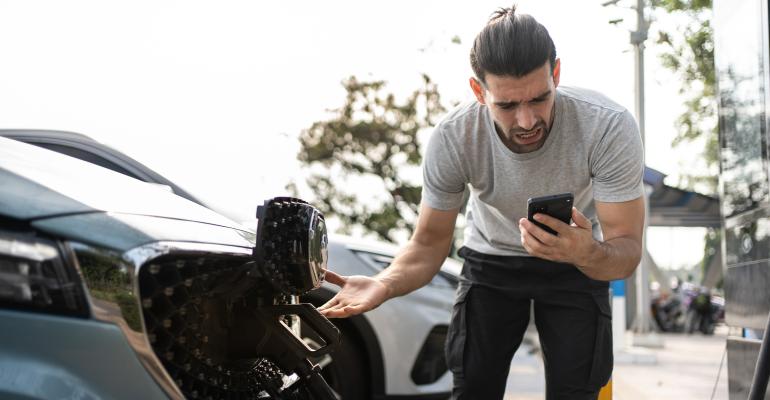Dealers who want to boost customer satisfaction scores and perhaps sell more battery-electric vehicles should focus on customer education even after the sale is finalized.
That’s because BEV owners experience more problems with advanced technology than owners of vehicles with internal-combustion engines, according to the just-released J.D. Power 2023 U.S. Tech Experience Index Study. Analysis for the study focuses on users’ experiences with advanced technology when it is first on the market.
“I would not classify this as anything near a failure,” Kathleen Rizk, senior director of user experience benchmarking and technology at J.D. Power, tells Wards. “There’s just a difference in the user experience; it’s a bit more problematic (for BEV owners).”
Many BEV buyers are first-time owners of electric vehicles. That means understanding how to operate a BEV is more complex than learning to operate a new ICE vehicle that includes standard components from past models.
That can cause owner dissatisfaction, Rizk theorizes. It seems logical that new BEV owners would initially concentrate on adjusting to critical technology such as range, energy use and charging. When they later try to use advanced technology, they become frustrated.
One example is that drivers of both the Rivian and Tesla must swipe across a touchscreen to change the direction of air vents.
“When we look at what some of these new OEM entrants, such as Tesla and Rivian, they are putting a lot of advanced tech on these vehicles, so there is a very high learning curve,” she says. “In an EV, you have a totally new experience versus the internal-combustion-engine vehicles, where maybe you have one or two new technologies. An EV is a whole new experience.”
Here’s How J.D. Power’s Study Numbers Stack Up
Seventeen of the 21 advanced features offered on both powertrain versions (BEV and ICE) have more quality problems per 100 vehicles (PP100) for BEVs (excluding Tesla) than for ICE vehicles. In addition, satisfaction is lower for BEVs across 86% of the advanced technologies compared with those on ICE vehicles. Features such as remote parking assistance (27.4 PP100 among BEVs vs. 10.7 PP100 among ICE vehicles) and interior gesture controls (49.6 PP100 among BEVs vs. 31.2 PP100 among ICE vehicles) have some of the most significant gaps between the two powertrain versions.
These study findings are also consistent across the J.D. Power 2023 Initial Quality Study (IQS) and 2023 Automotive Performance, Execution and Layout (APEAL) Study. The total vehicle problems in the IQS are 46% higher among BEVs (excluding Tesla) than ICE vehicles, and satisfaction is lower among owners of BEVs across nine of the 10 APEAL categories than among owners of ICE vehicles.
Dealers that offer customer training can help turn the numbers around.
“The biggest benefits a lot of customers get from their dealers are explanations and demonstrations,” Rizk says. “And if you can get that customer understanding and using that technology before they leave the dealership right, that’s a big help in making sure that technology doesn’t become a lost value.”





